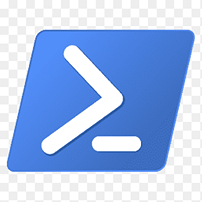What The Diff Review 2025: What It Is, How to Use It & Is It Worth It?
Translates code changes in pull requests into understandable summaries.

AI-powered summary generation
Granular control over repositories and files
Integration with GitHub/Gitlab API
What The Diff Description
Starting price
19
- Free plan
- Paid
- Free trial
What The Diff Detailed Review
What The Diff is a real time-saver for developers. It's like having a personal assistant that takes care of the tedious task of writing pull request descriptions. Instead of spending time trying to explain your changes in a way that everyone can understand, you can let the AI do the heavy lifting for you. This is especially useful for large teams where pull requests can be frequent and complex. The tool can also be a great asset for open source projects, where contributors might not always take the time to write detailed descriptions for their changes.
One of the standout features of What The Diff is its ability to generate rich summary notifications. These notifications are simplified and translated summaries of the changes, which can be really helpful for keeping non-technical stakeholders in the loop. This feature alone can save a lot of time and confusion, and it's something that I haven't seen in many other tools.
Another cool feature is the automated changelogs. What The Diff can generate a public changelog with all the changes, or you can consume it via its JSON API for internal use. This can be really handy for keeping track of what's been done and when. Plus, the tool also provides weekly progress reports with a summary of all changes of the whole week. This can be a great way to keep everyone on the same page and to monitor the progress of your project.
In terms of security, What The Diff seems to take it very seriously. The tool doesn't store your code, and it doesn't use any third-party services that do. It also doesn't train its AI model with your code. However, it's worth noting that the tool does need full access to your code to be able to read the diff. This might be a concern for some, but it's a necessary evil given the current GitHub/Gitlab permissions.
One potential downside of What The Diff is its token-based system. The tool processes the git diff of your pull requests to generate a descriptive comment, and big diffs need more tokens for processing. If you run out of tokens, you'll need to upgrade to a bigger plan or wait until your next billing cycle. Unfortunately, unused tokens do not roll over to the next month. So, you'll need to carefully manage your tokens to make sure you don't run out.
Speaking of which, let's talk about the pricing. What The Diff offers a free plan that has a limit of 25,000 tokens per month. This is a great way to test out the tool and see what it can do for you and your team. Users who need more tokens can sign up for a Pro plan, with pricing starting from $19 per month.
In conclusion, What The Diff is a powerful tool that can make the process of understanding and documenting code changes much easier. It has a range of useful features, and it takes security seriously. However, its token-based system might be a bit of a hassle for some. Overall, it's definitely worth checking out if you're looking for a way to streamline your pull request process.
Similar AI Tools

heyCLI
Code Assistant
Translate natural language into Linux commands.

Notebook Copilot
Code Assistant
AI copilot for Jupyter Notebooks.

Sketch
Code Assistant
Improve code-writing in pandas with AI-powered suggestions.

SourceAI
Code Assistant
Generate code in any programming language quickly.